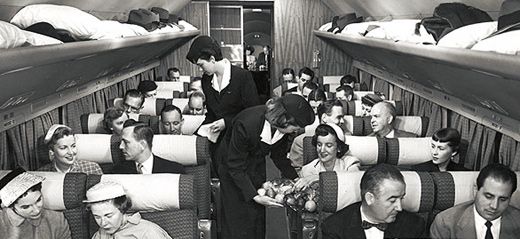Clearing the (Cabin) Air
A new research program aims to answer the old question: Is the air in airplanes really unhealthy?
/https://tf-cmsv2-smithsonianmag-media.s3.amazonaws.com/filer/cabinair-388-july07.jpg)
The next time you sneeze on an airplane, someone might be tracking every exhaled particle. A group called the Air Transportation Center of Excellence for ACER, is amassing data on air quality in commercial aircraft as part of a multimillion-dollar study for the Federal Aviation Administration. By the time the work is finished, the group hopes to be able to answer that nagging question: Does flying on airplanes really make you sick?
A collaboration of researchers from seven universities, ACER is broken into nine projects, each dealing with a particular aspect of cabin air quality, from airborne contaminants to the transmission of infectious disease. The Ozone Project, for example, examines the scientific evidence behind FAA regulations governing cabin ozone levels. To comply with the rules, some airlines route their flights to avoid areas where ozone is concentrated in the atmosphere, while others fit aircraft with ozone converters that break down the gas catalytically.
"How realistic is it to meet the current [ozone level] regulations?" asks William Gale, a materials scientist at Auburn University and ACER’s executive director. "FAA regulations specify a safe ozone level. What they don’t specify is how it should be achieved."
ACER won’t tell the airlines what to do, either. But its findings may be used to help set policy and determine which technologies for cleaning cabin air are most effective. "It’s up to manufacturers to offer choices and up to the airlines to deploy the choices," says Gale. The program has more than 30 industrial partners, and all the collected data will remain anonymous, so that no one airline or manufacturer is singled out for having problems or concerns.
Although it’s common for airplane passengers who get sick after a crowded flight to blame the guy who was sniffling in Row 25, the research on this subject is far from conclusive. Is your headache due to airborne germs or extended exposure to a low air-pressure environment? Maybe it’s just jet lag, or maybe you were already coming down with a cold. "Multiple factors are frequently a potential issue in a lot of these complaints," says Gale. "As an integrated center, we have the ability to pull all these projects together and see the connections."
One of ACER’s projects, on cabin pressure, has been testing live subjects at the FAA’s Civil Aerospace Medical Institute in Oklahoma City, Oklahoma. Volunteers are exposed to typical cabin pressure environments, then observed for any reactions or problems. Eventually, ACER would like to monitor commercial flights using carry-on sensors. "We’re in the process of figuring out whether to move from chambers to monitoring passengers during normal flights," says Gale. "It’s an arduous process to get permission to do those kinds of studies."
ACER’s Sensors Project is split in two: One half looks at sensors intended to monitor routine cabin temperature, humidity, pressure, and the like. The other half studies onboard sensors designed to respond to unusual conditions, whether it’s a disease outbreak or smoke. "We need to be able to detect biological and chemical species in the cabin," Gale says. ACER doesn’t develop the sensors, but evaluates what’s currently available to help determine whether the benefits outweigh the costs. Some sensors are more trouble than they’re worth, says Gale. "You’re dealing with an industry that’s very safety- and cost-conscious. We’re looking for effective hardware, not something that will be more of a problem."
For the Contaminant Transport Project, Purdue University scientists are in charge of modeling airflow patterns, while Kansas State University researchers put the models to work in a mockup of a cabin. "If an aircraft has become contaminated, would it be safe to return it to service?" Gale asks. "And what would it take to do that?" An FAA widebody airplane is being used for the tests in Orlando, Florida. Lab tests will be performed in Oklahoma, and several universities will be cooperating to produce results.
So far, ACER researchers have concentrated mostly on demonstrating the validity of their models, but as the program progresses it will shift more to tests in real-world settings. For those of us worried about the quality of the air we’re breathing on our holiday flight to visit the family, that’s very good news.
